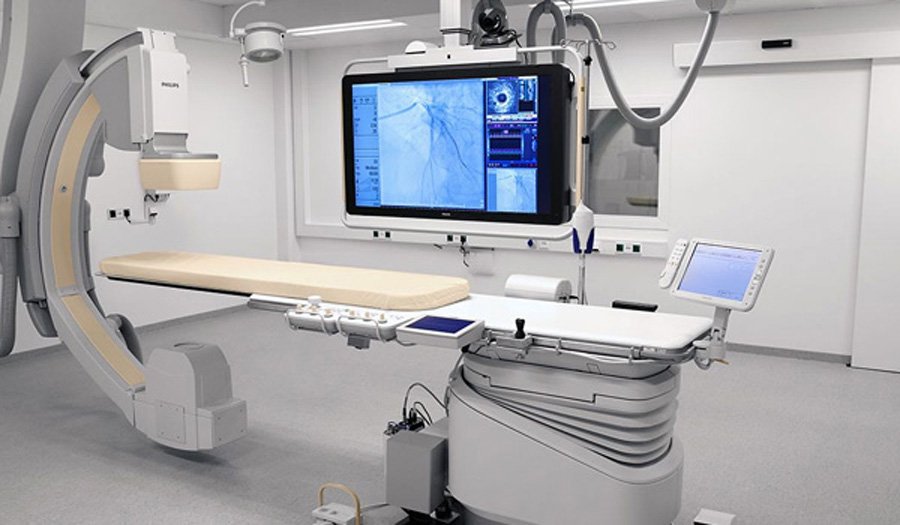Cath Lab (Catheterization laboratory)

A Cath Lab (Catheterization Laboratory) is a specialized facility where doctors perform diagnostic and therapeutic heart procedures. It allows them to examine blood vessels and treat cardiovascular diseases using minimally invasive techniques.
How the Cath Lab Works
Doctors insert catheters—flexible tubes—into blood vessels to access the heart and other areas. They use X-ray imaging (fluoroscopy) and advanced technology to visualize blood vessels, detect blockages, and treat heart conditions.
Common Procedures in the Cath Lab
- Coronary Angiography: Doctors use contrast dye and X-ray to identify blockages or narrowing in coronary arteries.
- Angioplasty (Percutaneous Coronary Intervention): Doctors open blocked arteries using a balloon or stent.
- Cardiac Catheterization: Doctors measure heart pressures, blood flow, and oxygen levels using a catheter.
- Electrophysiology Studies: These studies help doctors diagnose arrhythmias and may involve catheter-based treatments like ablation.
- Stent Placement: Doctors insert a mesh tube to keep narrowed arteries open and ensure proper blood flow.
Indications for Using a Cath Lab
Doctors recommend Cath Lab procedures for patients with:
- Chest pain or discomfort
- Shortness of breath
- Heart attacks or coronary artery disease
- Arrhythmias (irregular heart rhythms)
- Heart valve issues
- Risk factors like diabetes, high blood pressure, or family history of heart disease
Benefits of the Cath Lab
- Minimally invasive: Small incisions or punctures reduce recovery time and complications compared to surgery.
- Real-time imaging: Detailed, real-time images help doctors make quick, accurate decisions.
- Quick recovery: Many procedures allow for faster recovery and shorter hospital stays.
- Accurate diagnosis: Technology in the Cath Lab helps doctors precisely diagnose heart conditions and create effective treatment plans.
Limitations of the Cath Lab
- Risk of complications: Procedures carry risks, including bleeding, infection, or vessel injury.
- Not suitable for all patients: Some patients may not qualify for Cath Lab procedures due to health conditions or severe blockages.
- Costs: Cath Lab procedures can be expensive, especially if multiple interventions are required.
Alternatives to Cath Lab Procedures
- Non-invasive imaging tests: CT angiography, MRI, and stress tests can offer useful information without using a catheter.
- Medications: Doctors may recommend blood thinners, statins, or beta-blockers for some patients to manage cardiovascular conditions without catheterization.
